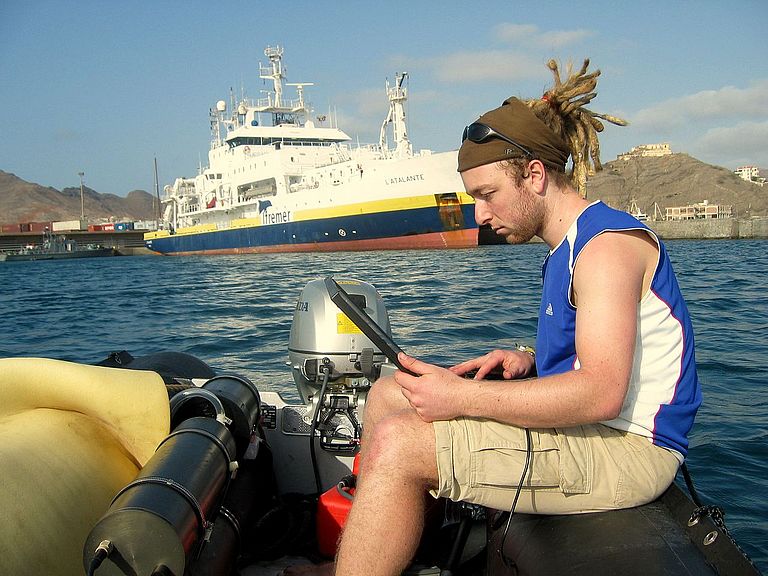Lost and Found
January 9, 2009, Mindelo - Marine science sometimes has an element of luck and adventure and relies heavily on international cooperation. Researchers of the Leibniz Institute of Marine Sciences (IFM-GEOMAR) in Kiel, Germany received a special Christmas gift when their prototype profiling float was located and recovered from the open ocean, far offshore of the West African coast, after seven weeks of radio silence.
The still-experimental NEMO profiling float is designed to monitor CO2 within the ocean and had been deployed in October at an ocean monitoring station close to the Cape Verde Islands (www.tenatso.com). The freely floating robotic instrument records the depth distributions of salinity, temperature, oxygen and CO2 in the upper 200 m of the ocean at 30 hour intervals. When at the surface the data are transmitted via the Iridium satellite system to the researchers in Kiel. Initially the float had functioned very well. But then after half a dozen dives the instrument stopped transmitting so that the worst – a total loss – was assumed. Maybe it had been destroyed by a fishing boat and sunk. Maybe its radio antenna had been bitten off by a shark. A few days before Christmas, however, the Kiel group received their unexpected gift when signals from the float were received again. Position: 500 km north of Cape Verde, far away from land.
“We had really given up on it”, said Björn Fiedler of IFM-GEOMAR who is working on the float’s data for his Ph.D. studies. Then everything went very fast. A rescue mission was organized with colleagues of the Cape Verdean partner institute INDP (Instituto Nacional de Desenvolvimento das Pescas) in Mindelo. Fiedler departed for Cape Verde on the day after Christmas and embarked immediately on the INDP’s vessel ISLANDIA whose crew had been brought back from their festivities. The ISLANDIA reached the drifter’s reported location 30 hours later. There it was spotted and could be recovered after a short search. “This was like hitting the jackpot”, the excited Fiedler said. But it turned out even better: despite the interrupted satellite-link the instrument had continued to carry out its measurement routine as planned, and the full set of data had been stored.
The project’s leader, Prof. Arne Körtzinger, was very impressed by the quick action of the Cape Verdean partners: “They organized this mission at very short notice over the public holidays. It is an impressive example of the quality of the research collaboration and the very high motivation of our partner institute INDP on Cape Verde. We are grateful to everyone involved”
Background information:
The experimental NEMO-Float is being developed within the SOPRAN project which is funded by the German Research Ministry (http://sopran.pangaea.de). The float is designed as a forerunner for a fleet of such floats that could monitor the ocean’s uptake of fossil-fuel derived CO2 from the atmosphere.
Contact:
Dr. Andreas Villwock (Public relations), Phone: +49-431 – 600 2802, avillwock@geomar.de



